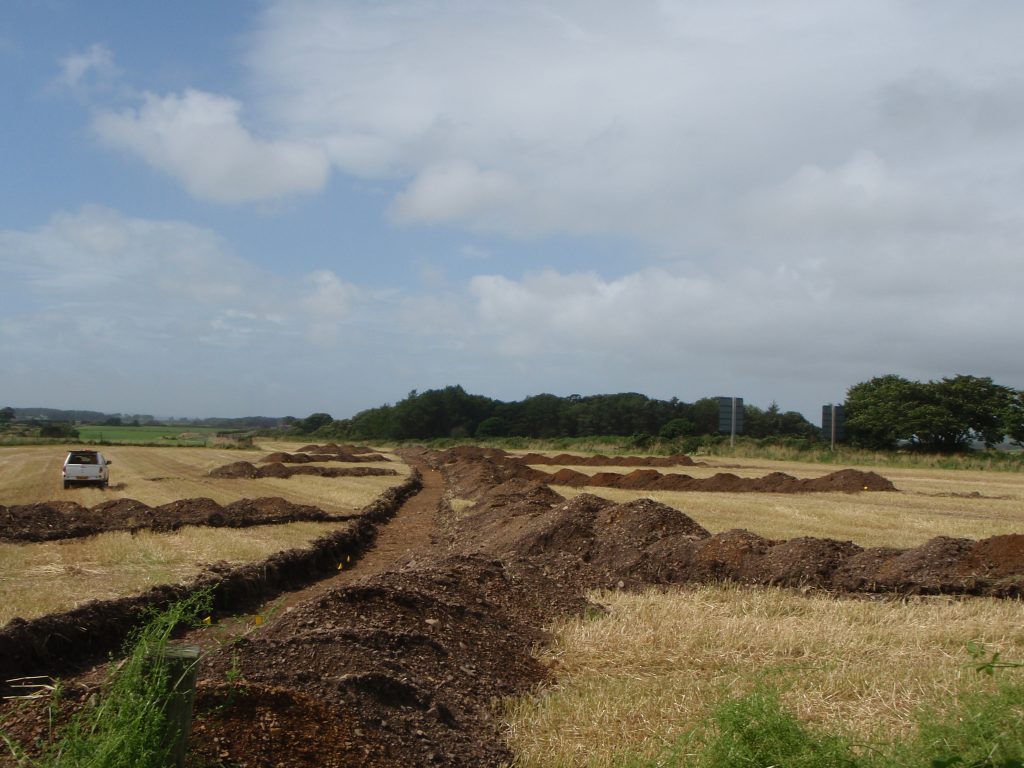Amey plc and a small GUARD Archaeology team led by Warren Bailie began an archaeological evaluation of the proposed A75 Dunragit Bypass route in Dumfries and Galloway in August 2012. This work was undertaken on behalf of Transport Scotland in advance of the main construction works commencing.

Archaeological evaluations are often required where there is a potential for unknown archaeology to be encountered. Historic Environment Scotland and the Dumfries and Galloway Council Archaeologist considered there was a potential for unknown archaeology along the route of this bypass given that significant Neolithic archaeology survives at Dunragit. This known archaeology is represented by three scheduled monuments at the west end of the bypass route. Flanking the south side of Dunragit are the cropmarks of a large Neolithic ceremonial timber circle, which was excavated by the University of Manchester in 1999-2002. The most prominent of the monuments at Dunragit is Droughduil Mote, a steep-sided and flat-topped mound, long thought to be an Anglo-Norman motte of the 12th century. It was discovered that this was instead Neolithic and likely related to the nearby ceremonial timber circle. The third scheduled monument, the Drumflower complex, 500m west of Dunragit village, was again identified by crop marks appearing in aerial photographs. This is a rectilinear enclosure defined by close-set pits and may also be Neolithic in date.

Prior to work starting on all major road projects, Transport Scotland will undertake an investigation to ascertain whether there is any archaeological material at the location and take steps to ensure that anything found is excavated and preserved where necessary. These investigations for the Dunragit Bypass revealed that the proposed route took it through the Neolithic landscape characterised by the Dunragit and Drumflower complexes and Droughduil mound. The main aim of the archaeological evaluation was therefore to establish the presence and extent of both the known and the unknown archaeology along the course of the route. The trial trench evaluation investigated a 10% sample of the 7.4 km long route. A total of 241 trenches were excavated by machine excavator under the watchful eyes of the GUARD Archaeologists. Eleven key areas of archaeological significance were uncovered.
